Regular readers will know that I adore electrostatics, whether they be headphones or loudspeakers I believe them to be the ultimate in driver technology and most able to accurately reproduce music, and have so really since my first experience with them back in the early ’70s with the STAX II headphone (it would be a few years after that when I would first be introduced to planar loudspeakers). What you might not know is that in 2016 when I made my first show report at CanJam SoCal 2016 (Here, Here, and Here) I discovered two prototype electrostatic headphones that completely revolutionized the format. One of those was the Sonoma Model One (Sonoma M1) and I have been trying to get a pair to review ever since. Unfortunately, Peter got to review the Sonoma M1 (Here), and Frank got to do the APERIO (Here), so when the BRAVURA was first released I made sure to get my name on the review schedule, it just took this long for me to get one due to staggering demand.
The Warwick Acoustics BRAVURA Electrostatic Headphone System:
The Warwick Acoustics BRAVURA Electrostatic Headphone is an upgrade from the original Sonoma M1 incorporating changes in materials and technology that have ensued since the Sonoma M1’s original development due to Warwick Acoustics’ continuing efforts to redefine the medium. (Note: the BRAVURA Headphone is available individually for those who already own the Sonoma M1 System.)
So what is it all about, what was the great breakthrough? Electrostatic headphones (and electrostatic loudspeakers for that matter) have always suffered from two flaws (one flaw really with two sonic shortcomings) limited dynamic range and limited bass response. Fundamentally what makes electrostatic headphones sound so good is also what creates this problem. A conventional dynamic driver uses a voice coil inside a magnet that is attached to a diaphragm. Signal traveling through the voice coil causes it to move causing the diaphragm to move. The disadvantage of this is twofold. First, there is a lot of mass, that of the voice coil which is composed of metal for the wire and metal, plastic, or paper for the former, and that of the diaphragm itself which needs to be as stiff as possible, as that leads to the second problem. High mass means it takes a lot more energy to start and stop the diaphragm as it needs to counter inertia. The second issue is that since all of the energy is focused on a specific spot on the diaphragm the diaphragm tends to distort (this is why loudspeaker drivers are cone-shaped which causes distortions of its own). An electrostatic driver floats a diaphragm between two stators, and signal applied to the stator causes the diaphragm to move, which means that you only have the mass of the diaphragm to deal with, plus since the energy is applied evenly across the diaphragm you can use much lighter materials with less distortion creating a significantly more accurate driver. The disadvantage to this is limited excursion due to the two stators which translates to less dynamic range and despite the larger diaphragm less bass. Warwick Acoustics’ breakthrough solution to this problem was to add a lightweight former to the diaphragm and use only a single stator with a significantly higher bias voltage (this is what energizes the stators and is why you need special amplifiers for electrostatic headphones) allowing for much greater excursion, so now you have an electrostatic driver (which the named the High-Precision Electrostatic Laminate [HPEL] Transducer) with dynamic range and almost more importantly deep bass.
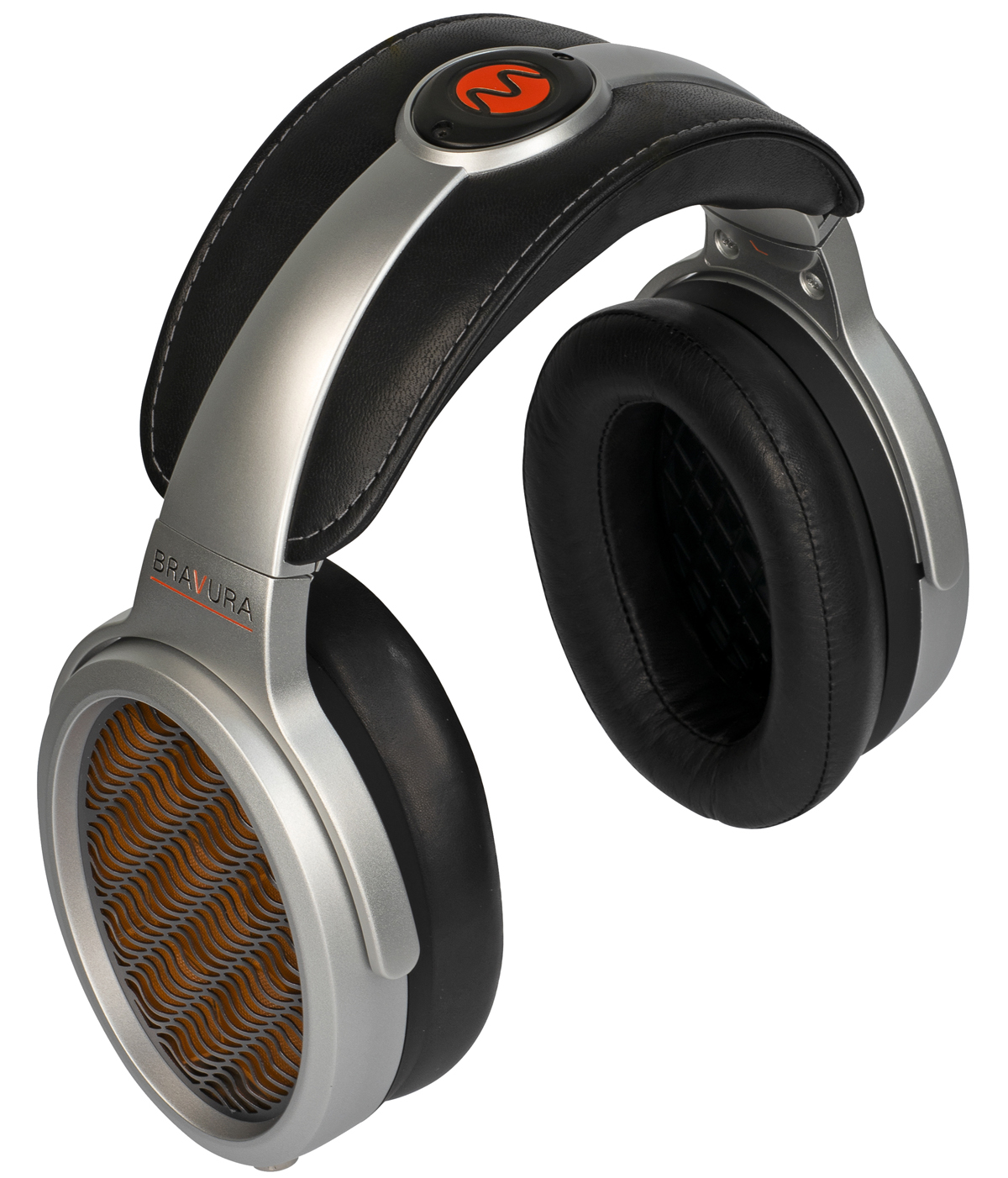
This brings us to the second side of the Warwick Acoustics equation the Sonoma M1 Amplifier. Since a special amplifier was needed for their HPEL Transducer they decided to go whole hog and build in a DAC (there is also an analog-to-digital converter for analog sources) so that they can apply DSP tailoring the exact sonic profile that they wish to achieve. Which puts me in mind of another thing that truly impressed me about Warwick Acoustics when I first encountered them, their wide musical tastes. I have found that most designers usually focus on one style of music when voicing their products (often classical), giving the products a bias towards that style of music at the price of diminished performance with other styles of music. The rare few that listen to a wide range of music, in my experience, produce a much more musical product able to perform well with any music. When I encountered Warwick Acoustics at shows, they traveled with a wide catalog of music, mostly high-resolution formats like DSD, including rare and obscure artists like Camel.
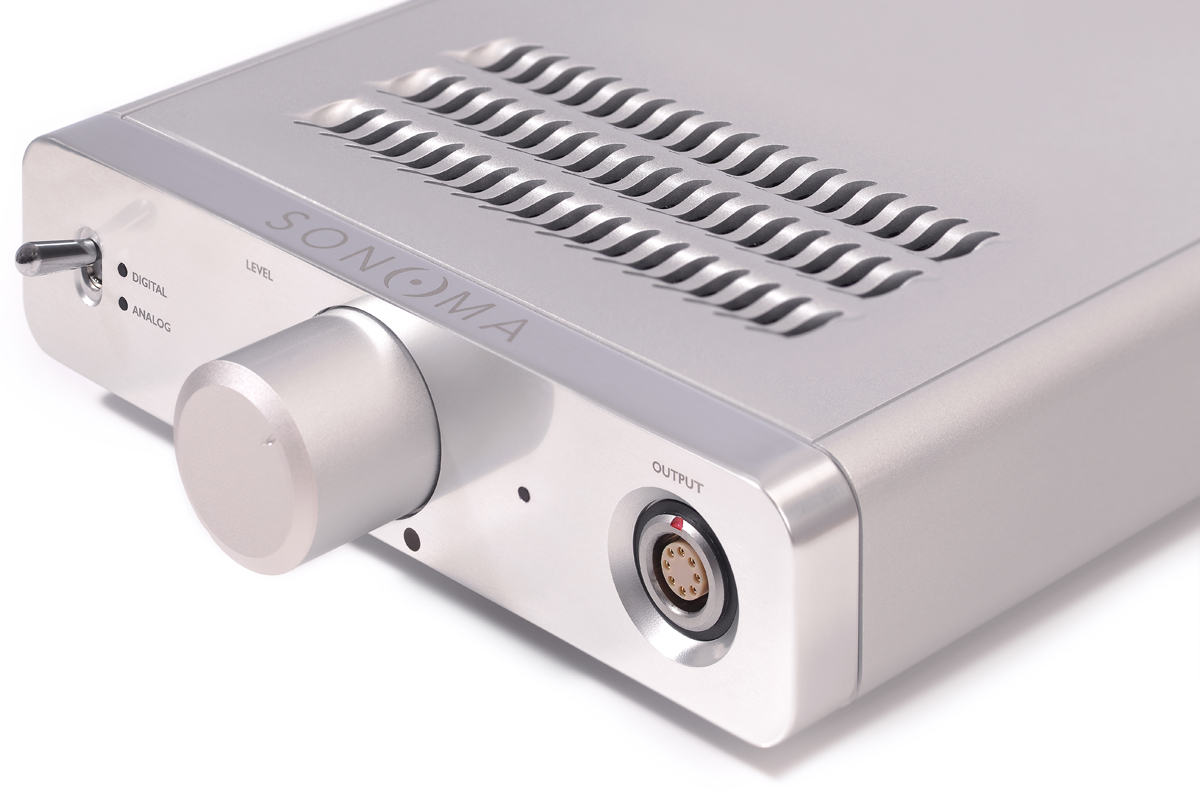
So here are the many bullet points that Warwick Acoustics make about the BRAVURA quoted from their website:
- High-Precision Electrostatic Laminate Transducer: The Sonoma M1 was the world’s first headphone system to use the High-Precision Electrostatic Laminate (HPEL) audio transducer developed by Warwick Acoustics Ltd. To date it has won 25 industry awards and received testimonials from audiophiles and recording professionals from around the world. With the BRAVURA we have invested 3 years of HPEL development to refine our core patented technology to further improve upon all the benefits for which electrostatics are famous. The latest evolution of the single-ended HPEL uses a new stator design and more advanced materials resulting in ultra low distortion, increased SPL and a wider bandwidth. Each HPEL is handmade and individually matched resulting in a listening experience with unrivalled transparency and musicality.
- Injected Magnesium Ear-Cups: With excellent strength-to-weight ratio, high stiffness, superior acoustical damping and outstanding RFI/EMI shielding, magnesium is the ideal material in which to house the HPEL to ensure optimal performance. It’s low weight also contributes to outstanding headphone comfort and reduced user fatigue.
- Handmade Hair Sheep Ear Pads: Ensuring comfort during long listening sessions, the BRAVURA ear-pads are handmade from top-grain, Cabretta hair sheep leather, known for its light weight, durability and softness.
- Luxury Headband: The BRAVURA uses a version of the headband designed for our flagship APERIO headphone. Its hand stitched finish delivers the ultimate in comfort and luxury.
- Custom Low-Capacitance Cable: We developed a bespoke ultra-low capacitance cable to guarantee optimal signal transfer between amplifier and headphone. Manufactured in collaboration with ATLAS and LEMO, the cable is strengthened with Kevlar between the inner cores, and uses high-precision self-latching LEMO connectors. A high quality woven Moplen outer braiding with soft feel and ultra-wear resistance ensures a luxury user experience.
- Class-A Energizing Amplifier: Like all electrostatics, the HPEL requires a high-voltage drive amplifier in order to function. The supplied drive comes from an optimally matched, high-performance, discrete FET Class-A amplifier with very low distortion and wide bandwidth. The amplifier is encased in a completely shielded, machined aluminum enclosure to ensure isolation from all interference sources, and provides USB and coax S/PDIF digital as well as RCA analog inputs. The USB input accepts all Hi-Res Audio formats up to 32-bit/384 kHz PCM and DSD via DoP (DSD64 and DSD128), while the S/PDIF input accepts all PCM formats up to 24-bit/192 kHz.
- ESS SABRE Reference DAC: ESS is universally recognized as the world’s premium DAC chip manufacturer, and we have opted for their 32-bit Reference DAC. Each stereo DAC chip is operated in mono mode to provide a measured 129 dB signal-to-noise ratio.
- Custom 64-Bit Double-Precision Fixed-Point DSP: In order to obtain the desired response at the output of the headphones, we digitally process all signals using custom 64-bit double-precision fixed-point arithmetic. Fixed-point is known to be superior in the world of audio processing, and our 64-bit arithmetic exceeds even the performance of professional audio workstations.
- AKM Premium ADC: All incoming analog signals must be converted to digital ahead of the DSP, and for this we use a multi-channel 32-bit/384 kHz AKM Premium ADC to deliver a measured signal-to-noise ratio in excess of 120 dB.
- Superior USB Data Cable: With gold-plated connectors and a silver-plated data path, the supplied USB cable, co-developed with Straight Wire, is the perfect connection between your digital music source and the Sonoma M1 system.
- Custom Universal Voltage PSU: Our custom-designed, universal voltage switch-mode power supply utilizes a fixed frequency design optimized for low noise within the audio bandwidth. To ensure a good connection with the amplifier unit, we use high-performance, locking DC power connectors. All audio circuitry within the amplifier is supplied by a secondary stage of ultra-low noise, high current linear regulation.
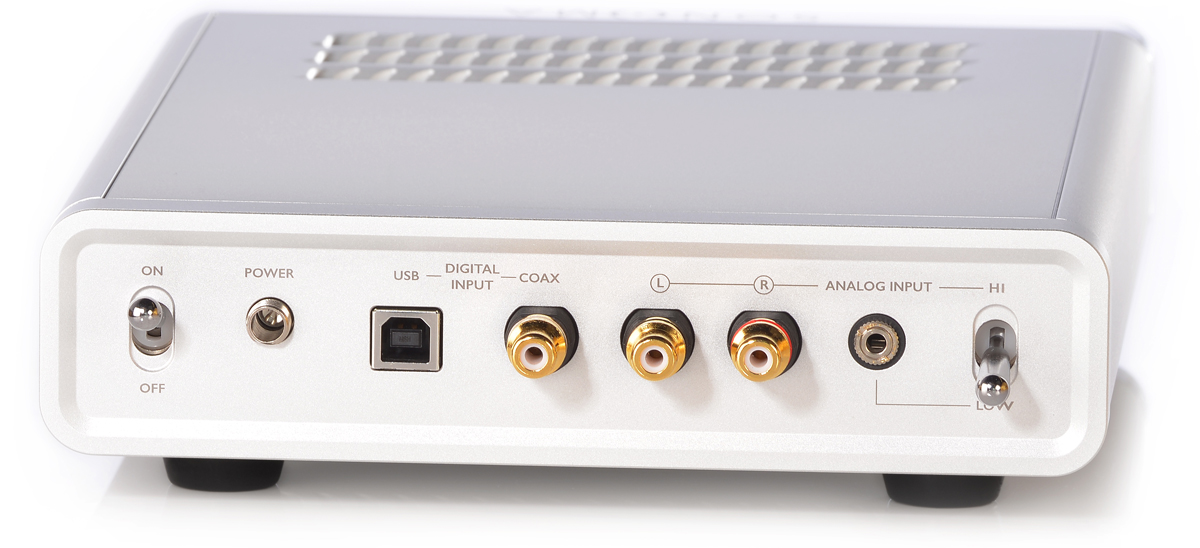
In appearance, the Warwick Acoustics BRAVURA Electrostatic Headphone and Sonoma M1 DAC/Amplifier are simple elegance, large oval injection molded magnesium earcups with thick sheepskin pads and a large oval sheepskin pad on the high grade polymer headband. A minimalist rolled aluminum chassis with a 5/8″ thick polished aluminum faceplate which is adorned with a single centered aluminum volume knob, a toggle switch to select between analog and digital sources, the LEMO headphone connection, and three indicator LEDs. The 1/2″ thick aluminum rear panel sports a toggle switch to select between the 3.5mm TRS (Low Level 850mV) analog input and the RCA (High Level 2.1 V) analog input, a COAX S/PDIF input, USB-Type B input, the power connection, and a toggle switch for power. The unit I received was in silver though black is available at a slight upgrade in price, due to its higher level finishing (that is, an engraved amp front panel and luxury soft touch coating on the headphone).

Living with the Warwick Acoustics BRAVURA Electrostatic Headphone System:
Since the Warwick Acoustics BRAVURA Electrostatic Headphone System is a full self-contained system set up was a simple matter of connecting the headphone cable, plugging in the power (via a Black Dragon Power Cable and my Core Power Technologies A/V Equi=Core 1000), and running the supplied USB cable from my FiiO R7 Music Server.

As is my usual wont, I began with Qobuz picking out something from the new releases, in this case, “London Ko” (24-bit/48kHz – Qobuz) by Fatoumata Diawara. The electronic synth bass from this World Music act was strong and rich while the percussion was crisp tight and musical. The piano in the distant background was extremely natural sounding, and the vocals were clear and realistic. The soundstage was enveloping.

Next up was Alison Goldfrapp’s “The Love Invention” (16-bit/44.1kHz – Qobuz) a deep dive into Electronic Music and I was treated to club-like dynamics and pulsating bass.
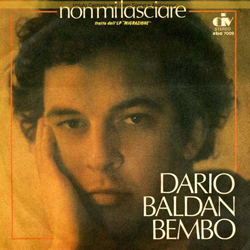
Moving on to more familiar music I selected “Non Mi Lasciare” (16-bit/44.1kHz) by Dario Baldan Bembo to see how low the BRAVURA could go and was overwhelmed by the musicality of Dario’s operatic vocal. The piano was rich and full and the subsonic bass was pervasive and natural.
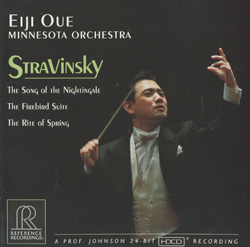
Feeling it was time for something higher resolution I picked Eiji Oue and the Minnesota Orchestra’s Reference Recording performance of “The Firebird Suite” (“Stravinsky” – DSD). The timbre of the instruments was outstanding, and the soundstage was huge with pinpoint imaging with jaw-dropping individuality to the instruments, both surrounded by air and set solid in place. The crescendos were dynamic with snap and texture to the tympanis. The musicality and the ability to identify previously unnoticed instruments were breathtaking. My one criticism is I wish there was DSD gain compensation as I needed to run at full volume and felt there was a little more on the table (many DSD tracks are recorded quieter to allow for greater dynamic headroom).

On the other hand, listening to The Persuasions sing “Imagine” from “The Persuasions Sing the Beatles” (DSD) it was easy to picture them in the room, the timbre and volume of their voices were just perfect. The texture on the sibilants was incredible with no hiss or spit. The soundstage was intimate with the singers solidly pictured in space.

Dynamic and exciting were the feature of the day listening to “Fair Exchange” by Be-Bop Deluxe (“Sunburst Finish” – 24-bit/96kHz). The cacophony of sound was easily separated into individual instruments competing for attention in the extensively layered performance. Again the soundstage was a halo of sound without borders.

For female vocal, I picked Kate Bush and “Them Heavy People” off of her first album “The Kick Inside” (24-bit/192kHz). I was immediately struck by the power of the bass guitar which had intricate tonality. Another surprise was the ability to delineate the multiple voices in the background, there were at least three instances of Kate herself and then another three independent male vocalists. Extremely tight is the best description of the sound of the varied instruments bringing out all the subtle nuances of each instrument’s sound.

As a final track, I chose Camel’s “Spirit Of The Water” from “Moonmadness” as a tribute to my first experiences with the Sonoma Model One. It was every bit as awe-inspiring as that first contact, the piano delicate and rich with full bottom end. The flute perfectly timed to the piano notes blended as a single instrument was ethereal and pervasive, and the otherworldly vocal floated all around you.
Conclusions on the Warwick Acoustics BRAVURA Electrostatic Headphone System:
It was very difficult to put down the Warwick Acoustics BRAVURA Electrostatic Headphone System as I just want to keep listening, exploring new depths in all of my favorite recordings. It is hard to express the speed of the BRAVURA, its ability to bring out the complex tonality of each instrument. When a string is plucked, you hear the plucking of the string, the vibration of the string, the resonance of the wood, and the reflections of the room. Simply put, if you are looking for a turn-key reference headphone system this is the system for you, regardless of your musical preferences.
System matching is always the key to audiophile sound, it is what makes the difference between good sound and great sound, and Warwick Acoustics does that for you. Of course, that is also the weakness of the system for those who want to tailor the sound to their specific tastes, or those who want something a bit above a chip-based DAC, or analog enthusiasts (while the Sonoma M1 Amp has analog inputs, digital sources will always sound better as the analog is converted to digital), but to achieve the sonic quality of the BRAVURA you would have to spend at least twice as much, in fact, the full BRAVURA system sells for about the same price as what I would consider entry level for an electrostatic headphone amplifier itself sans DAC and headphone.
I had to wait seven years to finally fully audition a Warwick Acoustics headphone system, over a year since the BRAVURA’s introduction, but I can only say that it was well worth the wait, the Warwick Acoustics BRAVURA Electrostatic Headphone System sits at the top of my recommendations list.
Price: Silver: $5,995; Black: $6,795; Headphone Only: $1,995 (S); $2,395 (B)
Manufacturer’s Website: https://warwickacoustics.com/headphones/collection/bravura/
To Purchase: https://www.moon-audio.com/warwick-acoustics-bravura-headphones.html
Specifications:
Headphones
| Configuration | Open-back headphones; circumaural type |
|---|---|
| Transducer | HPEL, single-ended electrostatic |
| Effective Diaphragm Area | 3570 mm2 |
| Moving Mass (for dynamic range) | < 0.2g |
| Transducer Capacitance | 105pF |
| Transducer Impedence | > 5GΩ |
| THD | 0.1% @ 1kHz / 100dB SPL |
| Frequency Response | 10Hz – 60kHz |
| Bias Voltage | 1350Vdc |
| Cable | Ultra-low capacitance, High-precision cable, 2m length |
| Weight (without cable) | 403g (14.2oz) |
Energizer & DAC
| USB Input | USB 2.0, type B; accepts digital audio formats up to 32‑bit/384 kHz PCM and DSD via DoP (DSD64/DSD128) |
|---|---|
| Digital Coaxial Input | S/PDIF; accepts digital audio formats up to 24‑bit/192 kHz PCM |
| Analog Input (High Level) | Dual RCA; 2.1 Vrms |
| Analog Input (Low Level) | 3.5 mm; 850 mVrms |
| DAC | Dual mono, 32-bit/384 kHz DACs with balanced outputs |
| ADC | 32-bit/384 kHz multi-channel ADC with balanced input buffers |
| Digital Signal Processing (DSP) | 64-bit (double-precision) fixed-point processing at native sample rates |
| Amplifier/Energizer | Discrete FET, single-ended, high-bias Class-A output |
| Distortion + Noise | < 0.05% |
| Bandwidth | > 65 kHz |
| Enclosure | CNC-machined 6063 aluminum |
| Power Supply | External: 24 VDC, 60 VA, fixed frequency, class B-compliant SMPS; Internal: fully isolated, ultra-low noise linear regulation |
| AC Mains | World voltage compatible (90-264 V, 50-60 Hz); IEC-60320 C14, earth-grounded power cable; 1.5 meter length |
| Dimensions | H x W x D: 57 mm (2.24 in) x 190 mm (7.48 in) x 290 mm (11.42 in) |
| Weight | 2.45 kg (5.40 lbs) |














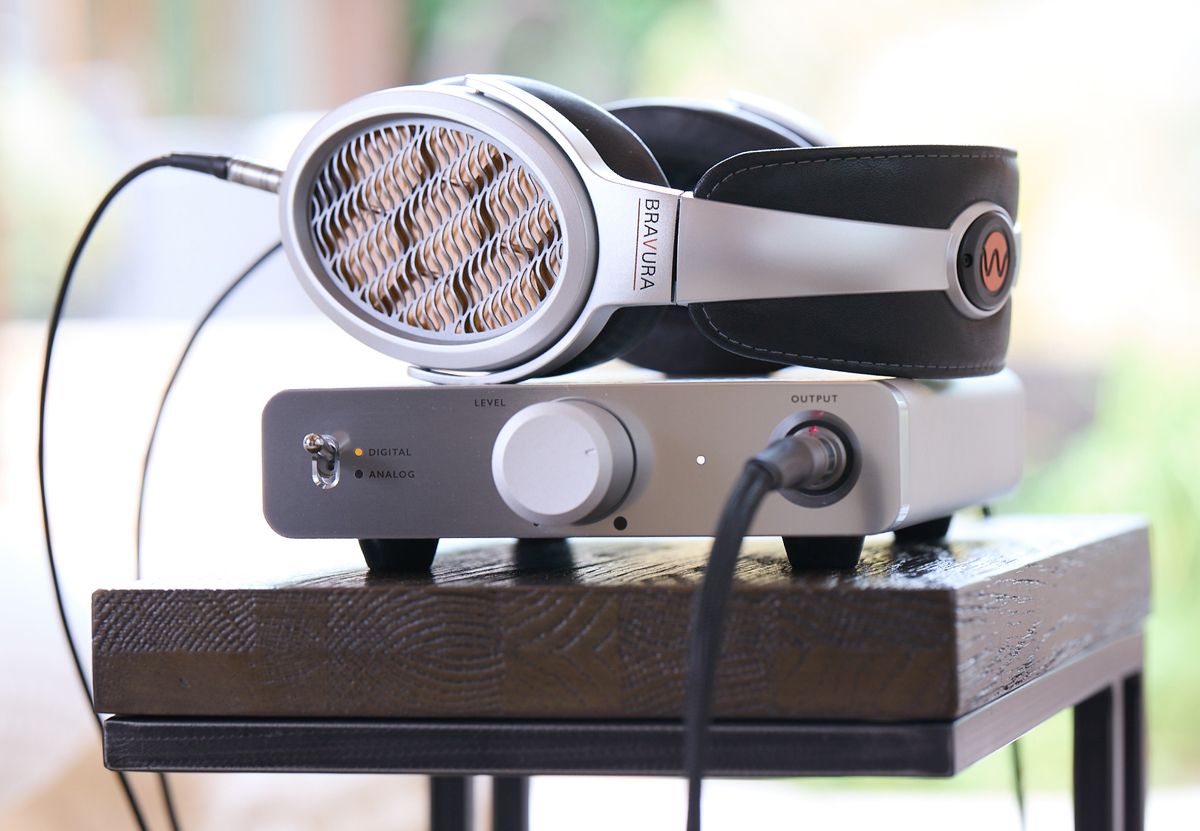
Want to join discussion?
Feel free to contribute!